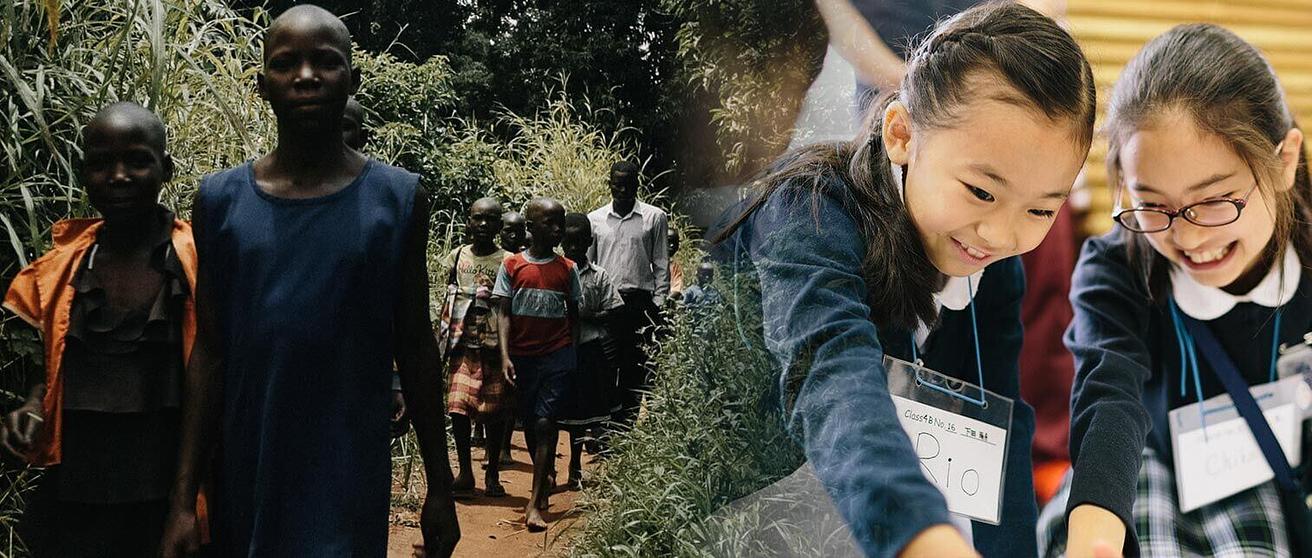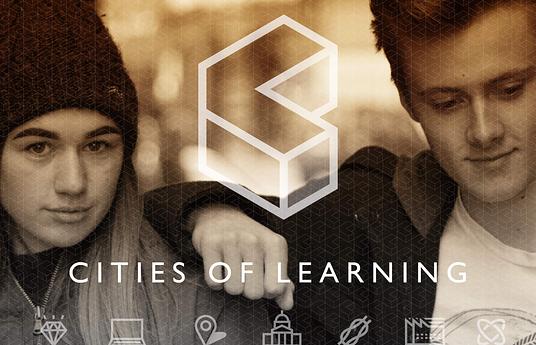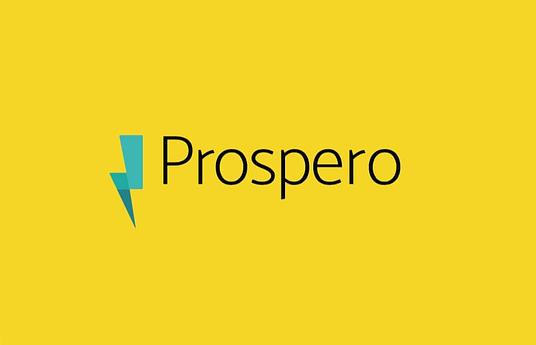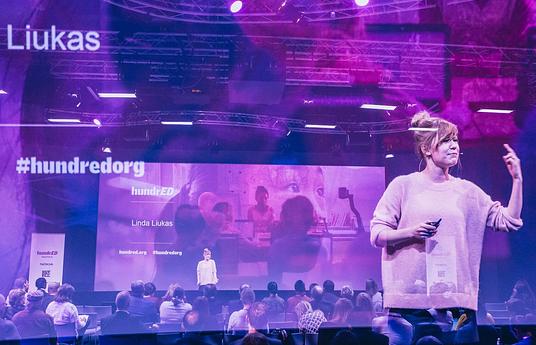HundrED’s 100 Inspiring Innovations of 2019 are officially released (and available for free here!), but what does this year’s collection, and the research process involved, tell us about the landscape of innovation in education across the world? We sat down with HundrED’s Jessica Spencer-Keyse, Head of Research, and Frederika Warren, Researcher, to discover their insights.
How This Year’s Process Differed To Last Year’s
This year’s process built on the previous year’s experience, to create an even more diverse and representative list. The HundrED Academy, who help to finalize the list, was strengthened through becoming more diverse so that multistakeholder and multicultural voices were heard, this also included the HundrED Youth Academy, making sure student’s had their voices heard too.
Our researchers also used the knowledge gained through their research report, Every Child To Flourish, to understand what the need is in education from every stakeholder’s perspective, to make sure that the innovations reflected solutions to real problems that need to be resolved.
Spencer-Keyse explained, ‘Last year was more about what’s out there in terms of innovation and that’s the defining difference. This year the research process involved in creating the report ‘Every child to flourish’ meant we created a systematic review of things out there, to see what people wanted to improve. We were then able to see what was lacking and look directly for them, such as LGBTQIA+, youth-led and children’s rights innovations.’
Looking to the future, the team want to improve through making sure that language isn’t a barrier to discovering innovations. They will also continue to increase the diversity of both the list and those involved in providing their expertise in the HundrED Academy and Youth Academy.
Innovations that scale have a few things in common...
Spending so much time investigating into innovations in education, the team have picked up some unique insights into why some innovations spread and why others don’t. The team discovered there tend to be commonalities between those that scale, and those that struggle.
‘Most innovations that do well are able to champion their idea, this takes having a strong leader and creating smart collaborations, and thinking dynamically so they’re able to get the resources to create a sustainable business model,’ explains Spencer-Keyse. ‘Innovations also have to be user-driven and created for people to address something they actually need.’
‘It’s also about meeting the need at the right time, predicting what’s needed and being ahead of the curve,’ adds Warren. ‘Also not everyone wants to spread so there has to be an activeness there.’
‘Some people change where they are and that’s fine,’ agrees Spencer-Keyse. ‘But we need to foster a global mindset to enable the best opportunities to learn. And it’s definitely easier to scale innovations that correspond with the priorities of governments, which is why you see a lot in STEM or coding. Also, there are lots of innovations in things like literacy and numeracy, as they relate to PISA results which links in with accountability.’
It’s also smart for anyone attempting to create a solution in education to do their research, quite literally. ‘People who do well are usually smart about their evidence. We tended to pick people for the list who understood how to create their impact and that comes from knowing their research,’ continues Spencer-Keyse.
What’s preventing innovations from spreading?
A lack of collaboration, funding, resource and fear of failure can all contribute to a lack of innovation, or can block innovations from scaling where they could be extremely beneficial to a child’s educational experience.
‘Basic education, particularly in countries in conflict, has some problems in scaling. There tends to be a lack of collaboration as all these charities and nonprofits are focusing on smaller areas, the area they’re helping,’ explains Warren. ‘There needs to be a platform to share these ideas, as some are doing work that’s better than others, and they could be learning from other’s examples.’
‘There’s lots of research that shows system leaders and policy-makers are under strain which means they’re not able to make choices which should be clear-cut,’ explains Spencer-Keyse, indicating that a fear of failure is one of the main reasons why education isn’t innovating in areas where the systems involved are more entrenched. ‘There’s also a lack of knowing where to invest, a lack of people knowing what works and why. We need trained people who know what makes an innovation special and worth implementing. It’s not easy to make innovation visible, and that means people can’t invest smartly as they don’t know what works. It’s very complicated to make sense of what works, as there’s a lack of evidence and it’s hugely under-researched.’
Strict curriculums can also inhibit innovation in countries where the syllabus is strictly controlled by the government. ‘We’re entrenched in curricula, there’s a sense of we’ve taken so long to create the curricula that the processes to implement and change education are very slow and bureaucratic. It doesn’t leave room for trying and failing and experimentation, whereas you would leave space for that in medicine or other public sectors,’ adds Spencer-Keyse.
Before you start innovating, do your research. Someone might have beaten you to it – whilst other areas are struggling for new ideas!
There are plenty of STEM and coding innovations already out there working in the world, and, interestingly, there’s been a huge boom in early childhood innovations – though some could do with some more work! As Warren explains, ‘there are now lots of innovations for girls and early childhood, which is great as there was a lack in this area, but now there’s too many to get through. It’s one of the easiest ones to find, but it’s hard to find a good one. It’s particularly hard to find ones that engage boys and girls in gender equality, as usually innovations just focus on girls.'
One that doesn’t separate the genders is Betty For Schools – who provide free resources about periods for both girls and boys. These talks and information shouldn’t be separated by gender, why should you only learn about your own organs?’

Innovations in the arts, humanities and ones that address diversity issues, such as LGBTQIA+, are severely lacking. Most innovations addressing LGTBQIA+ are charities working independently outside of education – our team would like to see more innovations created specifically for education and from within the education sector.
The arts and humanities tend to get lumped in with STEAM and the maker movement, rather than being appreciated in their own right. Our researchers point out that there’s a huge space for innovation in this area.
One of the largest areas of neglect in terms of innovation is leadership and educator training. ‘We need to provide the training and support to harness the power of educators and enable them to be the best they can be at scale. How to do this is a questions that comes up a lot at events and seminars,’ explains Spencer-Keyse. ‘We’re all having these similar problems across the world, but everyone keeps focusing on assessment and PISA results, but yet they know that that’s not enough.’
Spencer-Keyse continues, ‘when everything’s driven by accountability it doesn’t leave a lot of room for innovation in that space. System leaders need to innovate around assessment, as it is important, but the test should reflect the learning process. Leaders also need to make room for children’s rights in education and give them the opportunity to speak up and have their say. The holistic, child-centred approaches unfortunately tend to be more common in private sector education. Public sector leaders need to figure out how to make space for this for every child, and create a more common-sense model of education.’
Parents and teacher-training providers are finding it hard to innovate, whilst students face challenges depending on their environment.
To truly innovate education, we need to make sure we’re utilizing the contributions that every stakeholder can provide. One such group that always tends to get overlooked is parents. ‘It’s not well understood how to integrate them into the community, or how to get them involved in helpful ways,’ explains Spencer-Keyse, adding, ‘There’s a fear culture between schools and parents, as parents can block changes, but their integration, support and views are really key. We need to find a way to involve them.’
‘The source also needs to change, and that’s the teacher-training programmes,’ says Warren. ‘Being so linked to the government leaves little room for the teacher training systems to innovate, and they can often be mundane and redundant at the moment.’
Students can also be powerful stakeholders in education, as they’re the ones actually experiencing education so have valuable contributions we could all learn from. However, often the environment we’ve created for children prevents them from speaking out or knowing that having a voice in their education is actually part of their human rights.
‘When the environment is set up for the facilitation of a child’s education, rather than just teaching them what they’re meant to know, it gives children the opportunity to provide feedback and take ownership of their learning. We see this in schools like Big Picture Learning and Geelong Grammar School,’ explains Spencer-Keyse.

It’s not just the school environment that prevents or enables children from speaking out, but the country children live in has a big impact too, as Warren explains, ‘In Chile, children are really politically engaged in education. As a nation they’re very involved, because of the difficult political situation. They’re very big about speaking up for their rights as children.’
‘Our culture (in the UK) is very apathetic, it’s like if you speak out you’re being annoying. There’s a sense that you should just get on with it,’ adds Spencer-Keyse. ‘Teachers are perceived to be authoritarian, which doesn’t help anyone to bring out their autonomy and is how a lot of education systems are set-up. It’s like your view doesn’t count until you’re an adult, and critical thinking isn’t promoted enough either.’
There are global trends in education emerging, whilst regionally different trends occur.
Across the world, our researchers have found a worldwide movement in personalizing education with lots of different education systems looking to implement a more child-centered, individualized education. The maker movement is also taking hold globally, thanks to the design-thinking skills it gives children, preparing them to create things both on and offline when they go out into the world of work. The UN’s Sustainable Development Goals are also seen to be addressed in a lot of innovations.
Looking at individual countries and areas in the world, Australia and New Zealand are leading the way in nature innovations, and are also particularly good at creating wellbeing innovations. ‘What’s coming out of Australia and New Zealand is particularly surprising,’ comments Warren, ‘They’ve not had a lot of coverage for their ability to innovate education, but they’re doing some really amazing things.’
Scandinavian countries seem to be focusing on creating equitable education across their countries, making sure every child receives the same level of education. This remains a key issue in education, as location still plays a large role in how good an education your child will receive. For instance, in countries like the US, children in coastal states such as New York and California tend to receive a much more innovative education than their rural-state peers.
Schools in Latin America are getting around restrictions put in place by governments, by creating innovations that can be added on to the school week, either as evening or weekend classes and sessions. This makes sure that, even through tough times, children can still receive an innovative, creative and more holistic education.
Africa still has the fundamental problem of getting every child into education, however, there have been tentative steps towards refocusing on improving the education children receive, and moving on from just getting kids into school. The focus there is to improve the teaching quality in order to do this, but it’s still very early days.
In Kenya there seems to be a boom of innovators who are changing education from the ground-level, India is also seeing the change coming from the ground-up. Teacher-led innovations can be particularly hard to find, but innovations coming from this ground level seem to be quite common in East and South-East Asia.
US schools are leading in terms of innovation, which makes sense thanks to the resources available. Innovations in the US tend to focus on bringing project-based learning and personalized, autonomous learning into schools.
In the UK, there seems to be a lack of freedom to allow for innovation, with most innovations from there focusing on fundamentals like literacy and numeracy, and are therefore easily linked to creating better exam results. However, there has been a push for eco-friendly schools and sustainability education recently. Rural areas in particular, such as Devon, are well set-up to make use of their natural environments and can create a hotbed for innovation in this space.
With so many innovations to choose from it can be hard to know where to start! Our research team highlight a few favourites from this year’s collection...
Dream a Dream, Life Skills Assessment Scale – This assessment tool was designed as a simple observation based scale to be used by a facilitator of life skills programmes, to monitor the five core life skills: initiative, communication, problem-solving, conflict resolution, and the ability to understand and follow instruction. ‘Due to the fact it’s really research-based, it has a great chance of being successful and impactful,’ says Warren.
Amaze.org – Need contemporary sexual health videos? Amaze.org has created age-appropriate, medically-sound videos that tackle the biggest topics in puberty, for ages 10-14. ‘They’re all available for free, they include LGBT and parents can use the resources as well with their children outside of school – as well as teachers using them in the classroom!’ explains Warren.
Cities of Learning – This innovation highlights learning opportunities throughout the city, and allows children to explore their passions, interests and talents that may not be currently used or recognized in the traditional education system. ‘It recognizes that learning is dynamic and doesn’t have to happen in a traditional setting,’ says Spencer-Keyse.
CommunityShare – Create a community around education by following this innovation’s example! This online platform matches local expertise with student’s and teacher’s needs. People in the community become mentors, collaborators, guest speakers and internship providers for their local students. ‘They’re doing really valuable work, it’s so simple yet effective,’ says Warren.
Prospero – This innovation fuses with creativity with technology, by building interactive dramas online. Through turning the web into a place populated with characters, dilemmas, conflicts and challenges, it gets players to take part of these digital dramas. ‘It allows people to do drama and theatre online, and share it! It’s a great way for people to create and collaborate with different participants, either on a global or a local level, (or both!)’ says Spencer-Keyse. ‘There are few examples of combining the arts with tech on such a global scale.’
Tiny Trees Preschool – Through creating outdoor classrooms, without the brick-and-mortar buildings, this innovation makes nature education affordable and accessible for all children. ‘They’re very research-based and therefore have a massive impact. They’re able to provide a forest school education at a much cheaper price, because it’s 100% outdoor led. This means schools are able to give children who don’t usually access that holistic, nature-based curriculum a chance to access it,’ explains Warren. ‘They’ve partnered with universities in order to show their impact. It’s based in Seattle as well, which is notoriously cold and rainy, so it emphasizes that it’s OK to have children outside despite the weather!’




